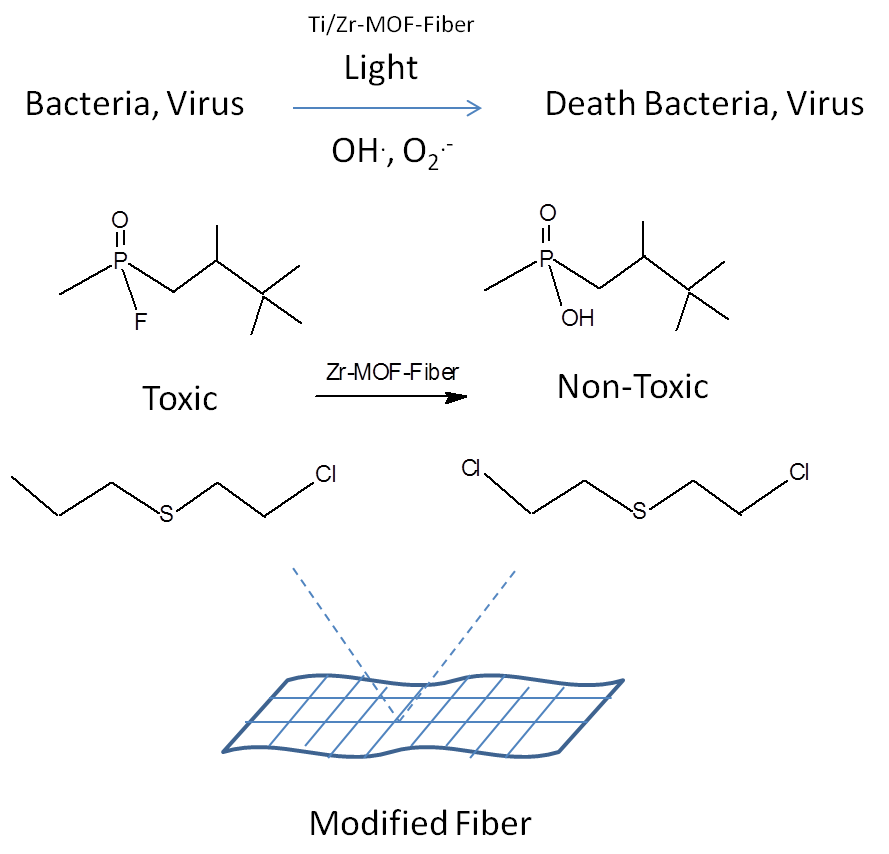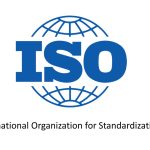Metal-Organic-Frameworks (MOF) added to textile fibers (Cotton, Cellulose, PET) showed catalytic activity1 in the hydrolysis of warfare chemical as phosphorous nerve agents and sulfur-mustard (Figure). Additionally, post-modification enables releases of oxidant agents capable of deactivating pathogens. Zr-MOF-fibers are a particularly active catalyst due to the Zr(IV) hexanuclear Lewis acid active sites. It is also reported that Ti/Zr-MOF fibers are photoactive in the deactivation of bacteria and SARS-COV-2 virus (Figure).
MOF are added to the fiber using hydrothermal growth, dip-coating, or biosynthesis methods. The first method consists in the use of MOF-808 Zr and UiO-66-NH2 (aminoterephtalic acid, Zr and oxide) as a linker. Good addition to the fiber is reported1. Without linker, MOF added does not attach good enough to the fiber, leaving MOF powder in the solution used. Dip-coating is used to prepare MOF-808/polyethylenimine (PEI)/textile composite by dipping the fiber into a stock suspension of MOF-808 nanoparticles and polymeric PEI in ethanol. Finally, the biosynthesis method consists of MOF/cellulosecomposite sponges preparation via fermentation of sugar in the presence of MOF nanoparticles.
Protective military and civil clothing and masks are then provided of an active component capable of chemically hydrolyzing/eliminating the chemical/Biological threat quite more efficient and convenient than the passive barrier provided by traditional protection devices.

1.- Kaikai Ma,Yuk Ha Cheung,Kent O. Kirlikovali, Xiaoliang Wang, Timur Islamoglu, John H. Xin,Omar K. Farha Protection against Chemical Warfare Agents and Biological Threats Using Metal−Organic Frameworks as Active Layers. Acc. Mater. Res. https://doi.org/10.1021/accountsmr.2c00200





